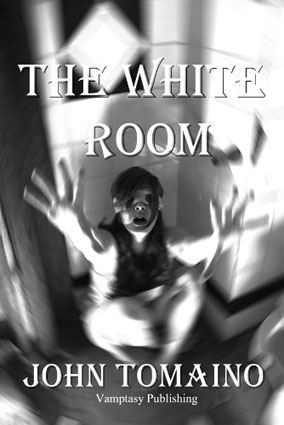 It’s only for a couple of days, she told herself. Just a few days. Keep it together. I can do this. – Jodie Sykes
It’s only for a couple of days, she told herself. Just a few days. Keep it together. I can do this. – Jodie Sykes
Newly minted PhD in Psychology in-hand, Jodie Sykes is thrilled when she’s offered a chance to participate in research with Professor David Byrne, a man whose psychology textbook she used during the process of obtaining her postgraduate degrees.
Her enthusiasm is quickly tempered, however, when she learns that Byrne wants her to gather research on the treatment of institutionalized mental patients… by going undercover in an institution as a patient.
Despite her misgivings, she convinces herself that it’s not as dangerous as it sounds. After all, since she’ll be signing in as a voluntary patient if things get too intense she’ll just sign herself out.
Professor Byrne, of course, has other plans. Unbeknownst to Jodie, it’s Byrne’s intention to use her as the test subject in a study of near total sensory deprivation.
With the help of a few complicit staff members Byrne manipulates Jodie’s behavior to the point she is acting out and able to be classified as a threat to herself and others. For the “safety” of everyone involved Jodie is placed in lockdown. Except this isn’t any ordinary solitary confinement, it’s the White Room.
Placed in a solid white room barely bigger than a prison cell, Jodie is deprived of all sound, natural light, and any human contact. She is monitored 24 hours a day via closed circuit cameras, her food and basic necessities delivered via a dumbwaiter controlled by the faceless person(s) observing her. With no external stimulus of any kind Jodie quickly loses track of time, forced to exist solely in her own mind. Because she holds a doctorate in psychology she is able, to a certain extent, to clinically evaluate her own mental unraveling. Yet despite her knowledge of the mind and what to expect from such conditions, Jodie is unable to stop herself from slowly slipping into madness.
Author John Tomaino’s The White Room is a highly disturbing read, especially when you consider that it is based loosely on the case of a researcher who did exactly what Jodie did; she checked herself into a psychiatric institution as a patient, only to find getting out again wasn’t as easy as anticipated. And while the real life case didn’t involve a deliberate, organized plot to keep her against her will, both her experience and The White Room nevertheless address some very intriguing – and disturbing – questions about how we treat people labeled as mentally ill.
Behavior exhibited by people can be interpreted differently based solely on their location and societal “label.” For example, someone waiting in line a long time to be served may well mutter frustratedly to themselves, perhaps even have a slight outburst to the effect, “What’s the damn hold up?” While such behavior would most likely be seen as rude, it’s not likely anyone would assume the person was mentally ill. A patient in an institution faced with similar circumstances – forced to wait a long time to be seen – may well exhibit similar behavior. Yet because of the setting, their behavior would very likely be interpreted as inappropriate; the muttering to themselves perhaps reflecting schizophrenia, the outburst a sign the patient was not able to adequately control their emotions and impulses. But is the reaction, in and of itself, really any different? Is is really any more or less “appropriate” just based on the setting? Arguably one would expect the non-patient to control themselves better, yet their behavior is the one more likely to be written off as understandable.
It is exactly that type of prejudgment based on labeling that works against Jodie in The White Room. In the days leading up to her confinement in the white room she becomes increasingly frustrated and confrontational. Of course it’s because she’s not mentally ill and wants to leave, but the staff members not in on the situation see her behavior through the prism of mental illness and treat her accordingly. It becomes a catch 22: behave like a “normal” person when you’re in an abnormal setting and you’re treated as mentally ill and therefore in need of psychiatric help. But if you don’t respond to situations the way a “normal” person would you’re treated as disconnected and unable to properly respond to stimuli, and therefore in need of psychiatric help. Is there any way out of that deadly loop for Jodie?
The White Room is an extremely fascinating read, in which author John Tomaino challenges the reader to step outside their initial “that could never happen” disbelief at Jodie’s predicament and ask themselves, is it really that hard to believe someone could get sucked down the institutional rabbit hole?
The White Room is available from Vamptasy Publishing (ISBN: 978-1908505989).





Sara S.
October 10, 2011 - 11:00 AM